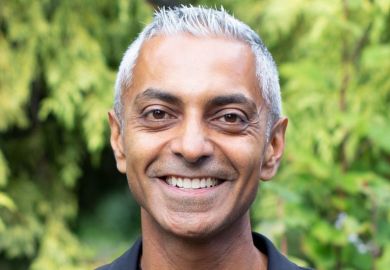What would one call the confluence of Bangla (Bengali) and English? Banglish, of course! Such hybrid linguistic code-switching is common throughout South Asia; it is one of the many lingering effects of British colonialism. As the term Banglish has been in use for many years, I could not help but be amused by Aminul Hoque’s claim to have “coined” it to describe the hybrid language spoken by British Bangladeshis in East London. There are many variants of Banglish, and the one spoken by British Bangladeshis reflects an identity unique to them.
Hoque explores the construction of this specific British-Islamic identity via the experiences of six young interviewees. All are third-generation Bangladeshis living in Tower Hamlets, the London borough that is home to the largest concentration of Bangladeshis outside Bangladesh. Whitechapel, with its bilingual English-Bengali street signs and shops selling Bangladeshi vegetables, dried fish, syrupy sweets, brightly coloured saris and Bengali-language newspapers and books feels like a little Bangladesh.
But appearances can be deceptive. Tower Hamlets may be home to the young women and men aged 15 to 19 who participated in Hoque’s study, but they do not necessarily feel at home in Bangladeshi culture, which they see as “alien” and often un-Islamic. For them, Bangladesh is the repository of a dated tradition.
Yet neither do they enjoy an easy access to Britishness and are often acutely aware of being considered outsiders. As one participant says, “never in a million years will we be…accepted”. Like previous generations, these third-generation Bangladeshis struggle to stake their claim to Britishness. Despite their desire to be British, they are also frequently wary of this identity, finding it as alien as the Bangladeshi identity of their elders. British identity is seen as the province of the “white”, those who “drink alcohol” and dislike Muslims. This reductive view is the result, Hoque says, of the racism his interviewees speak of being subjected to, from being “spat at” and called names to undergoing extra security checks at airports.
Estranged from their ancestral culture and rejected by mainstream UK culture, this cohort sees Islam as a neutral space in which to construct an identity different from that of their parents and grandparents. Hoque’s examination of the strategies this generation employs in constructing British-Islamic identity is intriguing. I am not convinced, however, by his assessment that his interviewees’ politicised Islamic identity is unique to third-generation Bangladeshis in London, not least because Islam as a political tool has a long history in South Asia and played a crucial role in the 1947 partition. The strategy unique to this generation is their marked preference for Arabic. They frequently use Arabic phrases and words in their conversation, but, as these interviews show, they do not always know the meaning of the words and phrases they use. This is a remarkable development in the construction of British-Islamic identity, and I wanted to know more about why Hoque’s interviewees believe that Arabic offers “linguistic membership” in a global Islamic community. After all, the majority of Muslims in the world are not Arabs and practise their Islamic identities in languages other than Arabic.
These East London teenagers feel empowered by their sense of belonging to a global, albeit “imaginary”, Muslim community. In this strategy of identification and empowerment there is, however, a contradiction. While the study participants enthusiastically identify with this global community, they experience a sense of “disconnection” from “backward” Bangladeshis. But are these Bangladeshis not also a part of the global Muslim community? Hoque does not explore this contradiction, nor does he explain what his interviewees understand by Bangladeshi culture. And even when the narrative shifts from the perspective of the interviewees to that of the author, Bangladeshi culture remains an unclear concept.
In introducing a participant who, unlike the other five young people, comes from a middle-class background, Hoque states that although her family members are highly educated and liberal, they are still “paradoxically…rooted within Bangladeshi culture”. I fail to comprehend why he sees this as a paradox.
Mafruha Mohua is teaching assistant in English literature, Queen Mary University of London.
British-Islamic Identity: Third‑Generation Bangladeshis from East London
By Aminul Hoque
Institute of Education Press, 176pp, £26.99
ISBN 9781858566030
Published 27 February 2015
POSTSCRIPT:
Review originally published as: Backing away from Banglish (28 May 2015)
Register to continue
Why register?
- Registration is free and only takes a moment
- Once registered, you can read 3 articles a month
- Sign up for our newsletter
Subscribe
Or subscribe for unlimited access to:
- Unlimited access to news, views, insights & reviews
- Digital editions
- Digital access to THE’s university and college rankings analysis
Already registered or a current subscriber?




